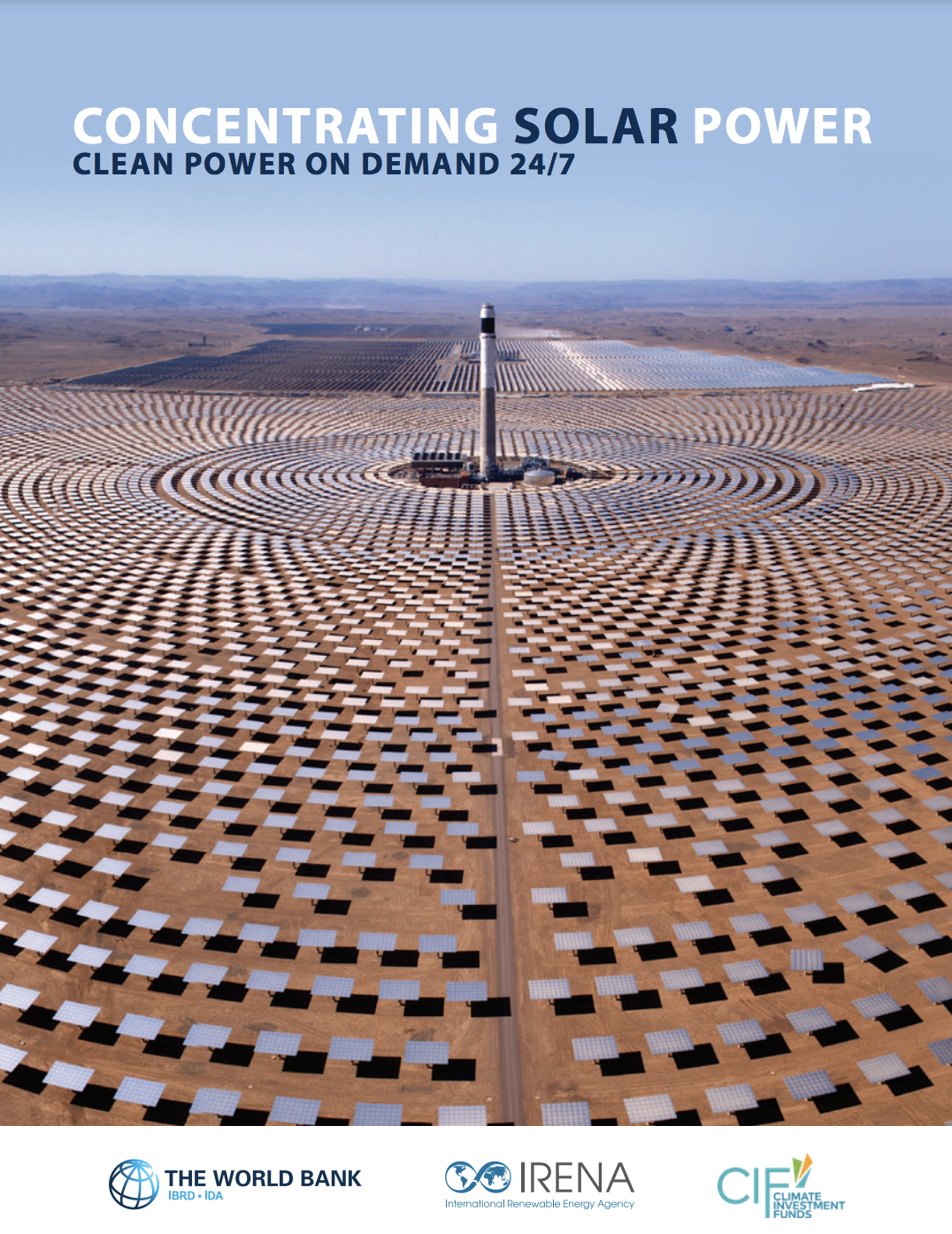This report provides an overview of the development of Concentrating Solar Power and its potential contribution in furthering cleaner and more robust energy systems in regions with high levels of direct normal irradiation (DNI). Concentrating solar power (CSP) with thermal energy storage can provide flexible, renewable energy, 24/7, in regions with excellent direct solar resources.
CSP with thermal energy storage is capable of storing energy in the form of heat, at utility scale, for days with minimal losses. Stored heat can then be converted into electricity and dispatched as required by demand, even at night or during cloudy periods of the day. CSP plants can be designed to work as baseload power generation assets, providing renewable power 24/7. CSP is also flexible, meaning that it can quickly ramp up or down as required by the grid. When ramping down, the output is not wasted; instead, it can be stored as heat in molten salt tanks and deployed hours or even days later.
CSP with thermal energy storage can lower the cost of rapidly expanding renewable energy In places with high levels of direct normal irradiation (DNI), which abound in the Middle East, northern and southern Africa, and several other regions around the world, CSP with thermal energy storage can enable the lowest-cost energy mix at the country level by allowing the grid to absorb larger amounts of energy from cheap variable renewables, such as solar photovoltaic (PV). However, using inexpensive PV to achieve the lowest cost energy mix requires flexible generation assets or low-cost storage to meet electricity demand 24 hours a day. One way to achieve this flexibility via renewables is to combine CSP with thermal energy storage and/or hydropower, depending on availability. To simply add wind or PV capacity without mitigating variability is likely to lead to high levels of marginal curtailment, making each additional unit of PV or wind effectively more expensive because less and less additional output can be used. CSP’s capacity to reduce curtailment is important because it enables grid systems to realize the full value of PV and wind investments and to replace a larger share of fossil fuels in the energy mix.
